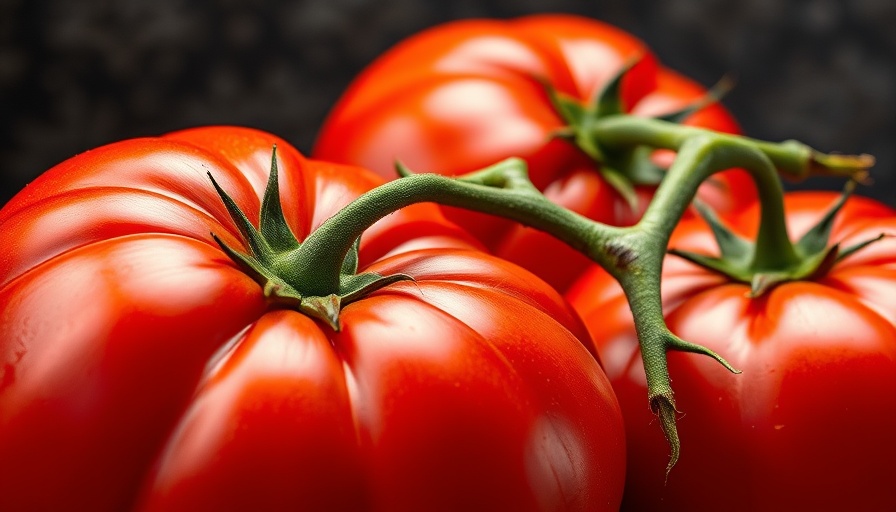
Unveiling the Majesty of Beefsteak Tomatoes
Imagine sinking your teeth into a thick, juicy slice of beefsteak tomato, its vibrant colors bursting with flavor. This popular heirloom variety is more than just a garden favorite; it's a culinary star! With their substantial size and rich taste, beefsteak tomatoes are perfect for fresh salads, classic sandwiches, or even grilled to emphasize their savory profile. As they continue to charm gardeners across the globe, it's crucial to understand the dynamics of cultivating these beautiful tomatoes.
Understanding the Growth Cycle of Beefsteak Tomatoes
To harvest the best beefsteak tomatoes, timing and patience are vital. These annual vegetables thrive in USDA zones 2-11 and require a warm, sunny environment for optimal growth. Each plant calls for around 75-85 days to mature, during which they flourish, spurred by rich soil and adequate watering. Offering space and sunlight lets these hefty beauties reach their full potential—easily growing up to 48-60 inches tall and wide.
Why Soil Quality Matters
The secret to successful beefsteak tomato cultivation begins with the soil. The ideal growing medium is organically rich and well-draining, with a pH level of 6.0-7.0. Investing time in soil preparation—like composting—ensures your beefsteaks receive necessary nutrients. Planting in raised beds can also assist with drainage, which is especially crucial for these high-water-demanding plants.
Pest Prevention and Plant Care
In the garden, beefsteak tomatoes may face pest threats like aphids and whiteflies. Regular inspection can mitigate damage; using organic pesticides can protect your plants while keeping the ecosystem intact. Familiarizing yourself with companion planting can deter unwanted species. For instance, planting basil nearby can act as a pest-repellent.
Harvesting Techniques for Optimal Flavor
Proper harvesting techniques can significantly impact the taste of your tomatoes. The fruit should be picked when it has achieved a deep, consistent color and feels slightly soft when gently squeezed. To avoid damaging the plant, use scissors or pruning shears to cut the fruit, leaving a small stem attached.
Exploring The Garden's Rich Heritage
Historically, tomatoes have transcended continents and cuisines. Introduced to European gardens by the Spanish after being discovered in South America, they’ve evolved into incredibly varied and beloved food. As we cultivate beefsteak tomatoes today, we reconnect with traditional gardening practices, honoring the roots of agricultural evolution. Embracing sustainable gardening techniques ensures we cultivate this heritage responsibly.
Future Trends in Tomato Cultivation
The future of garden cultivation might embrace vertical gardening and urban spaces to combat land scarcity. Exploring these innovative techniques can optimize growing efficiency while maintaining a connection to nature. Additionally, focusing on pollinators—by planting flowers alongside vegetables—enhances biodiversity in your garden.
Concluding Thoughts
Growing beefsteak tomatoes is more than just a gardening project; it’s a journey through taste and history. As these plump, flavorful fruits grace your table, they'll remind you of the joys of home gardening. So, gather your tools, roll up your sleeves, and embrace the beauty of cultivating these culinary gems!
 Add Row
Add Row  Add
Add 




Write A Comment